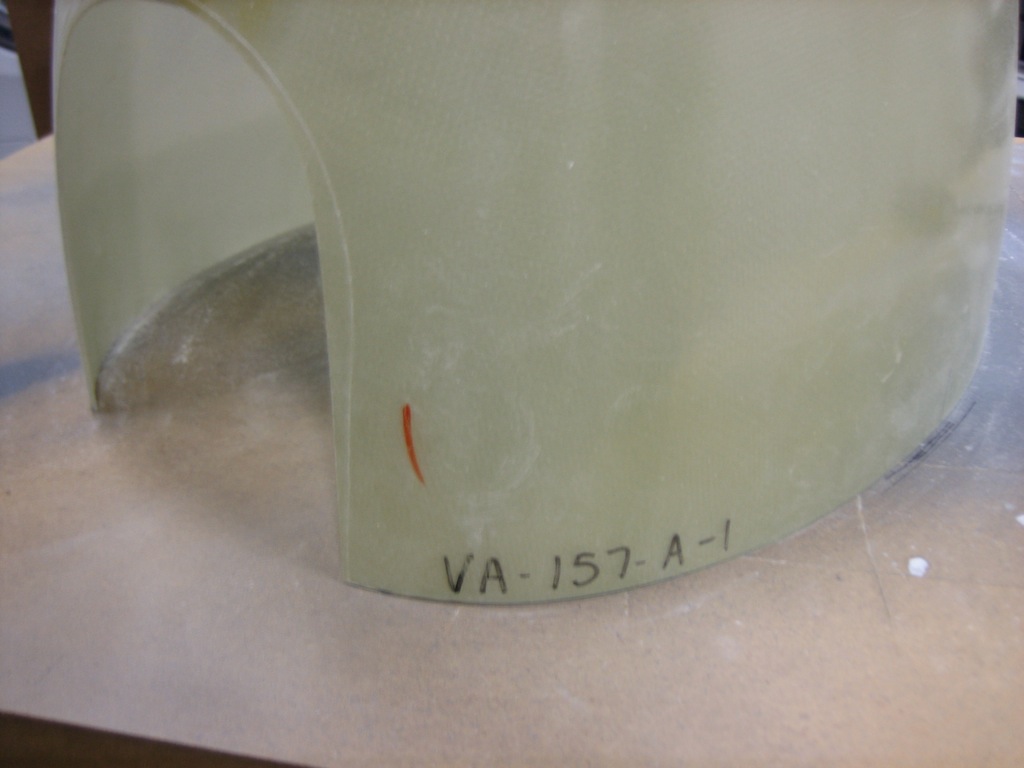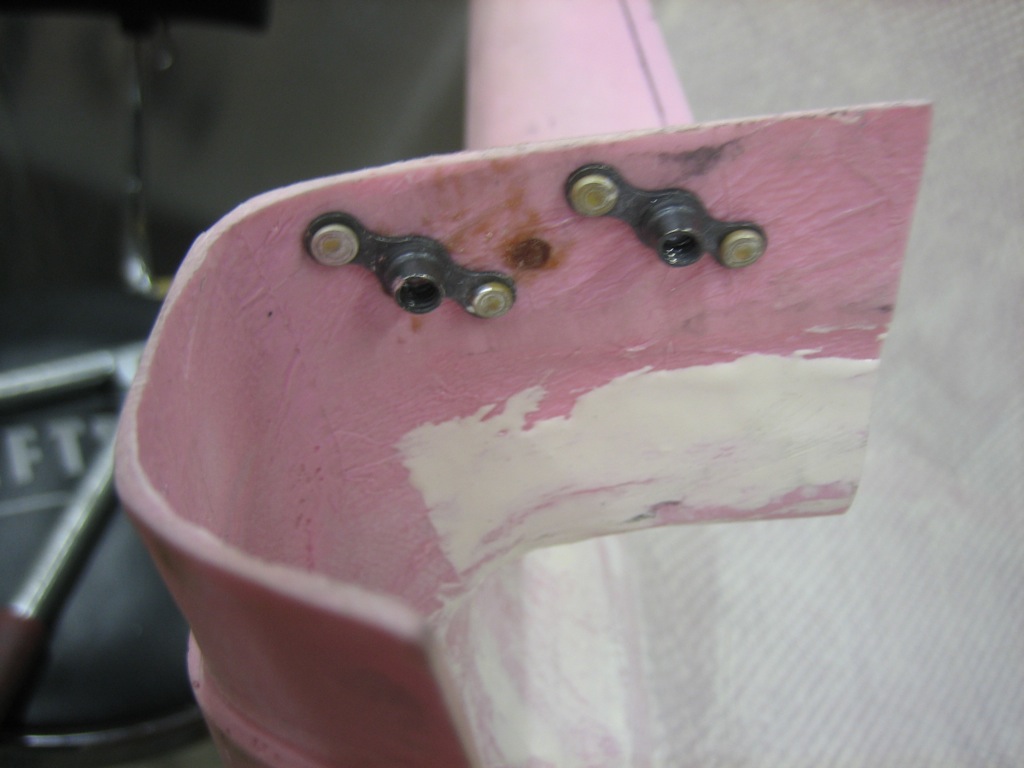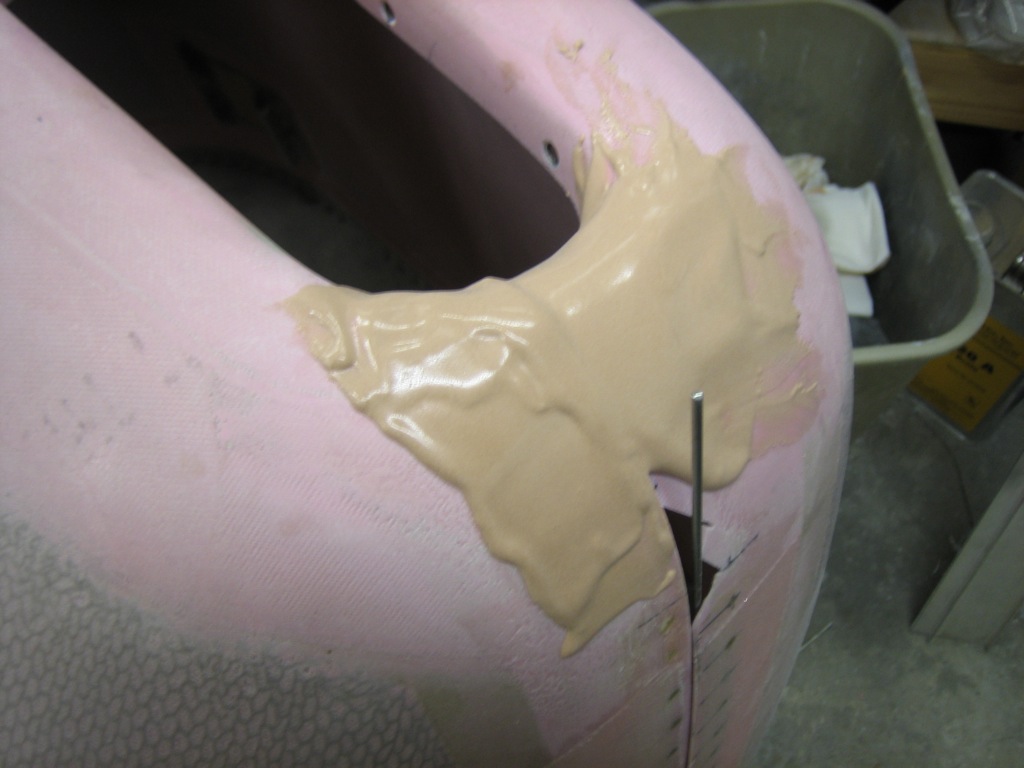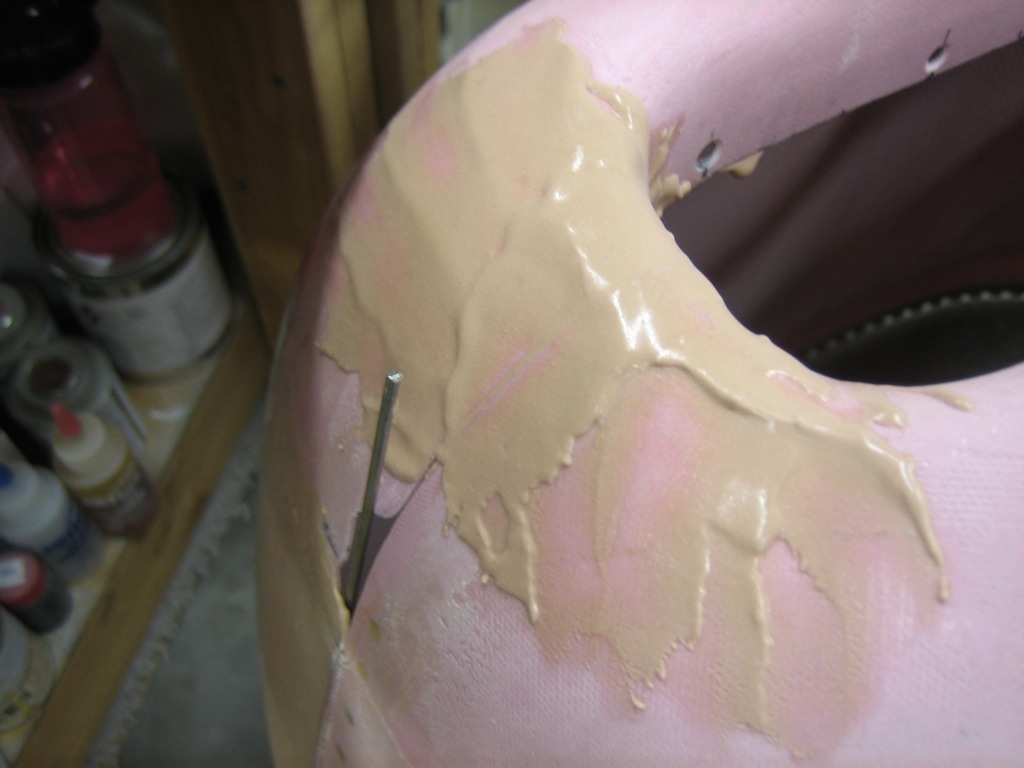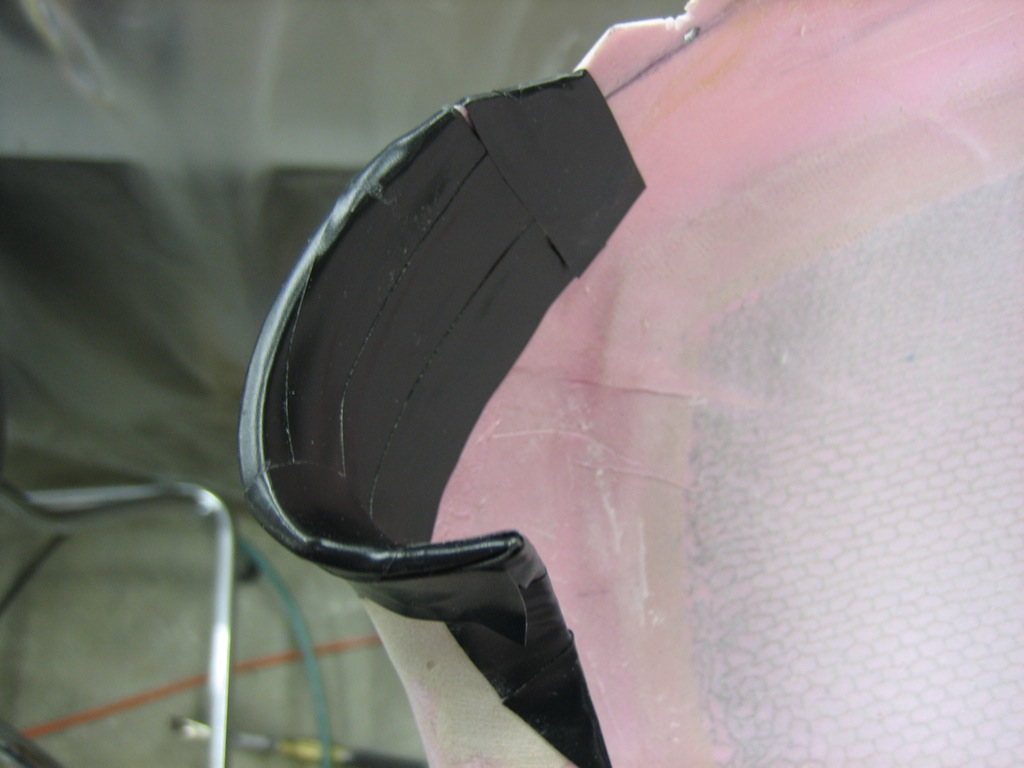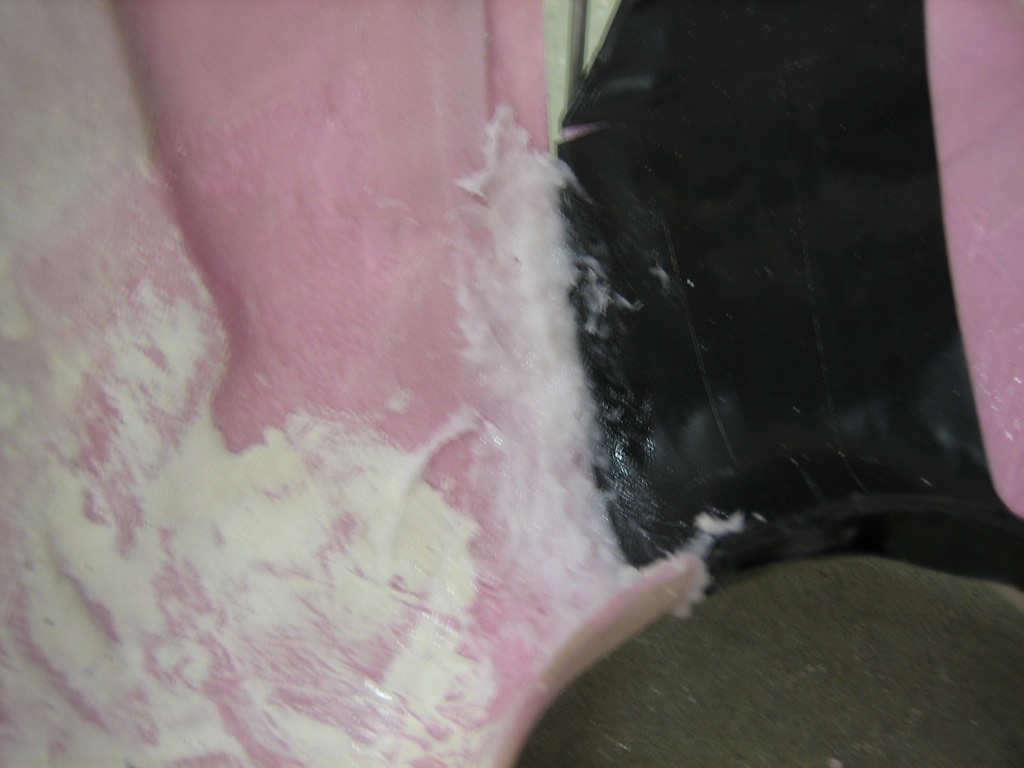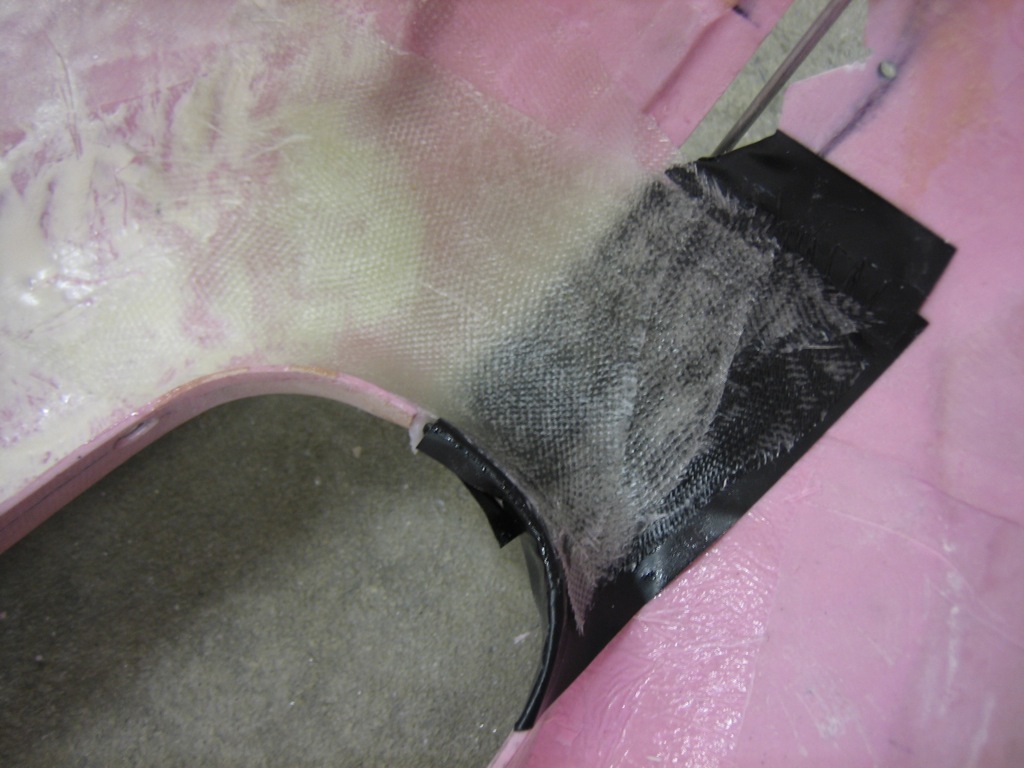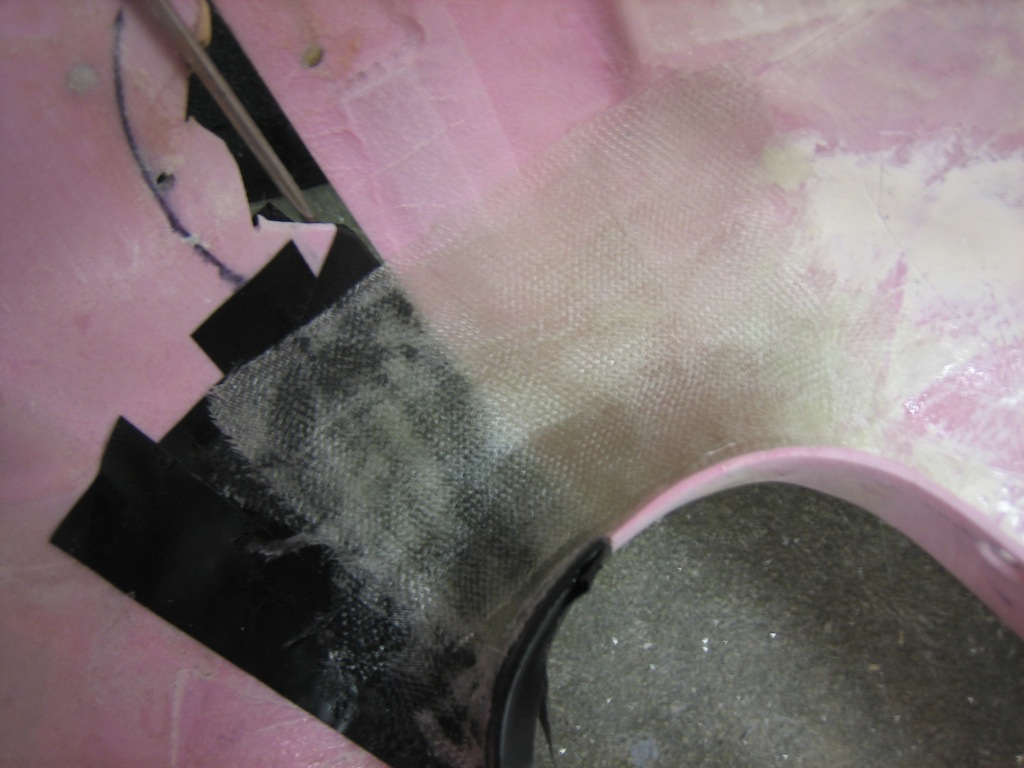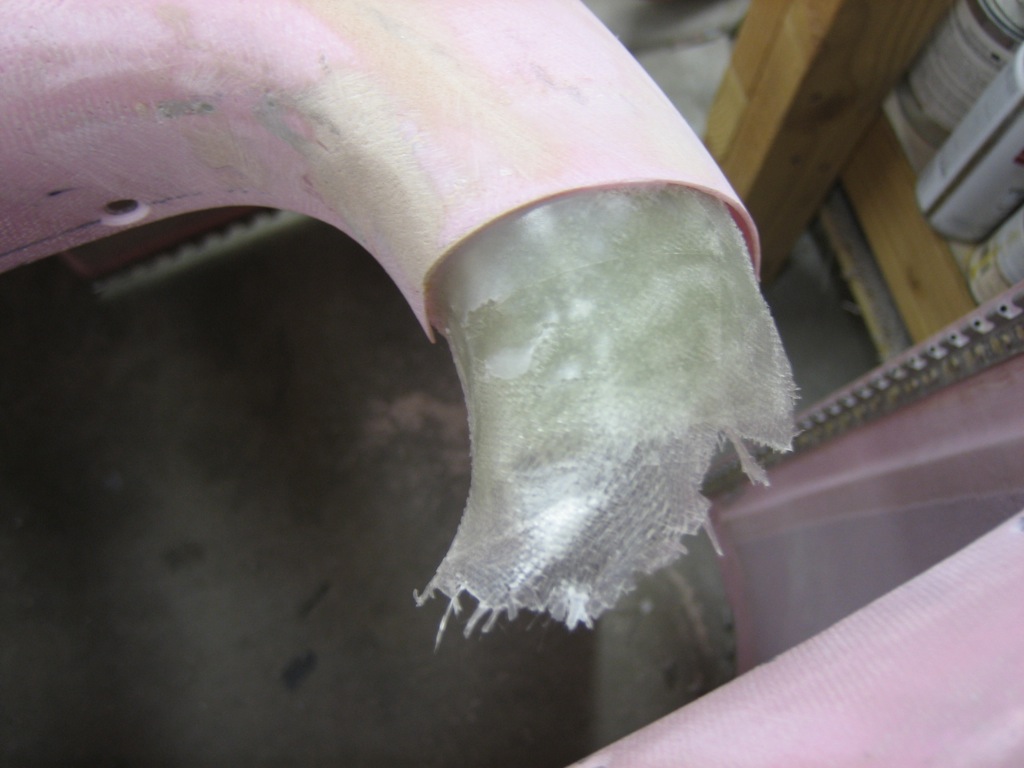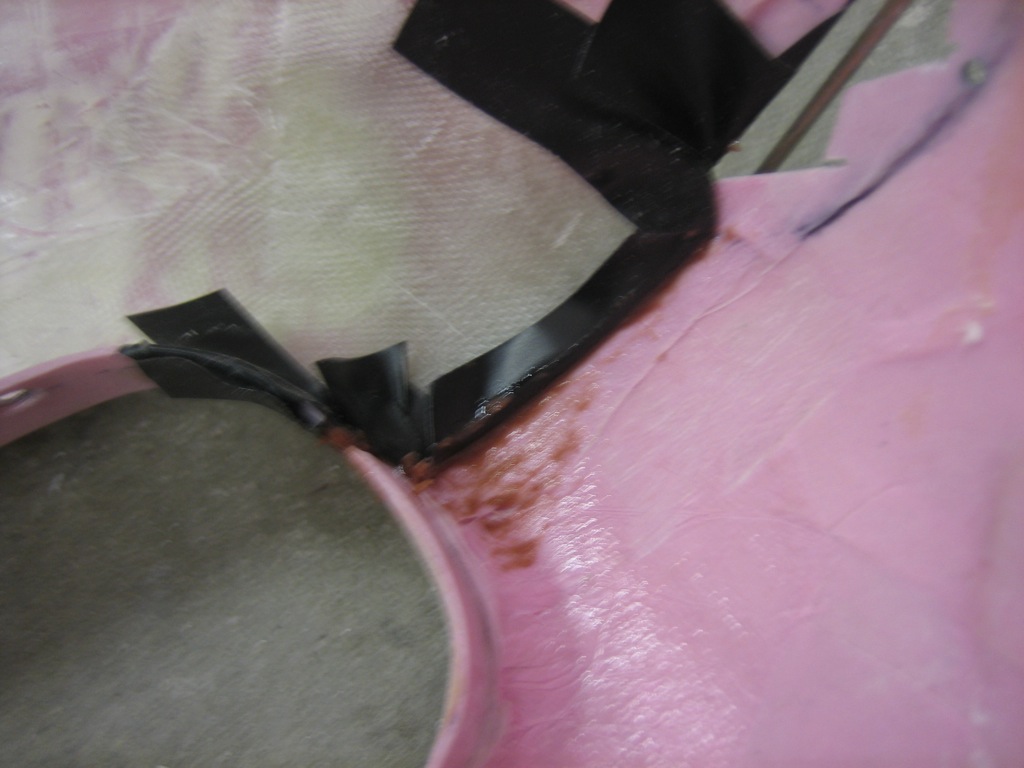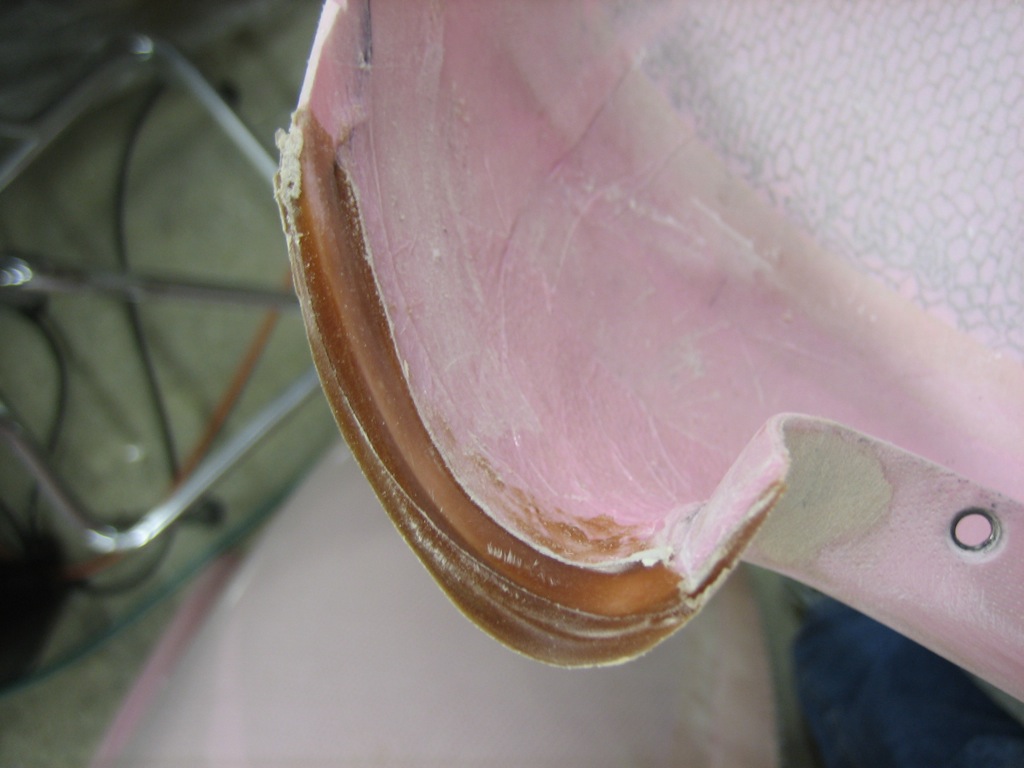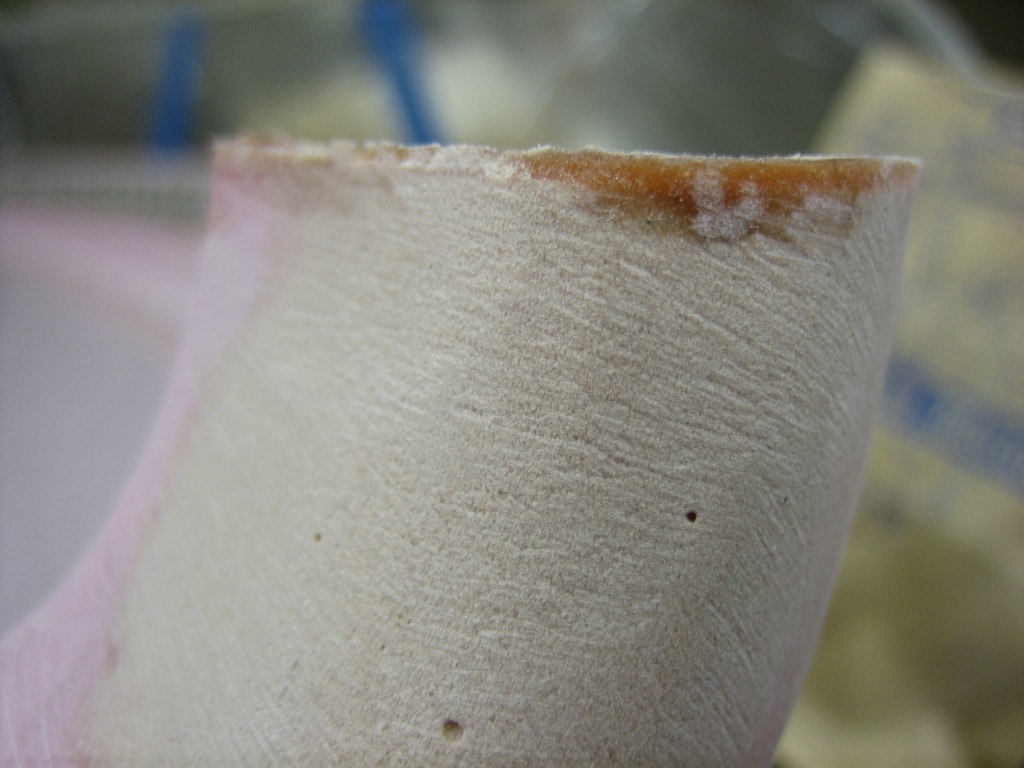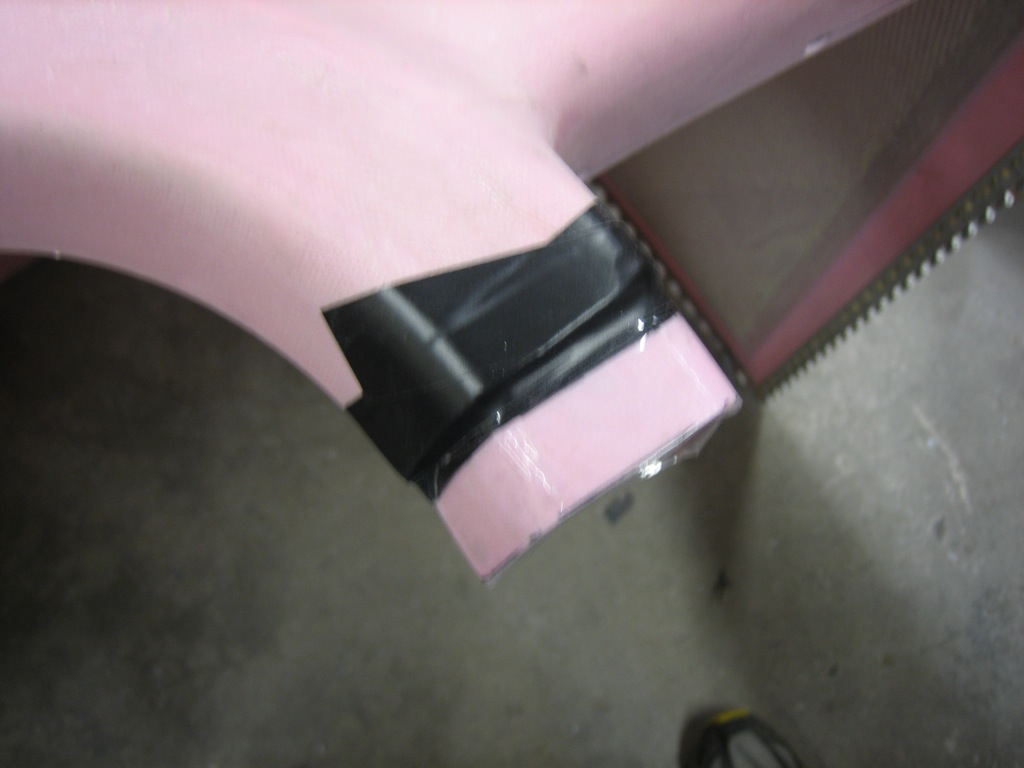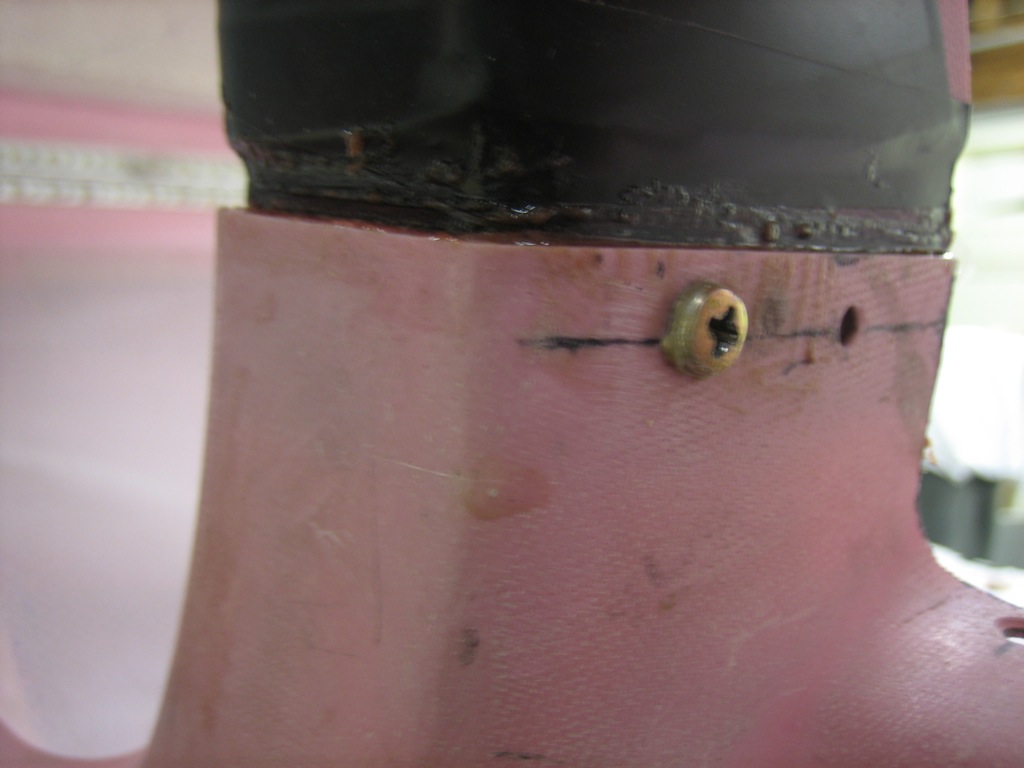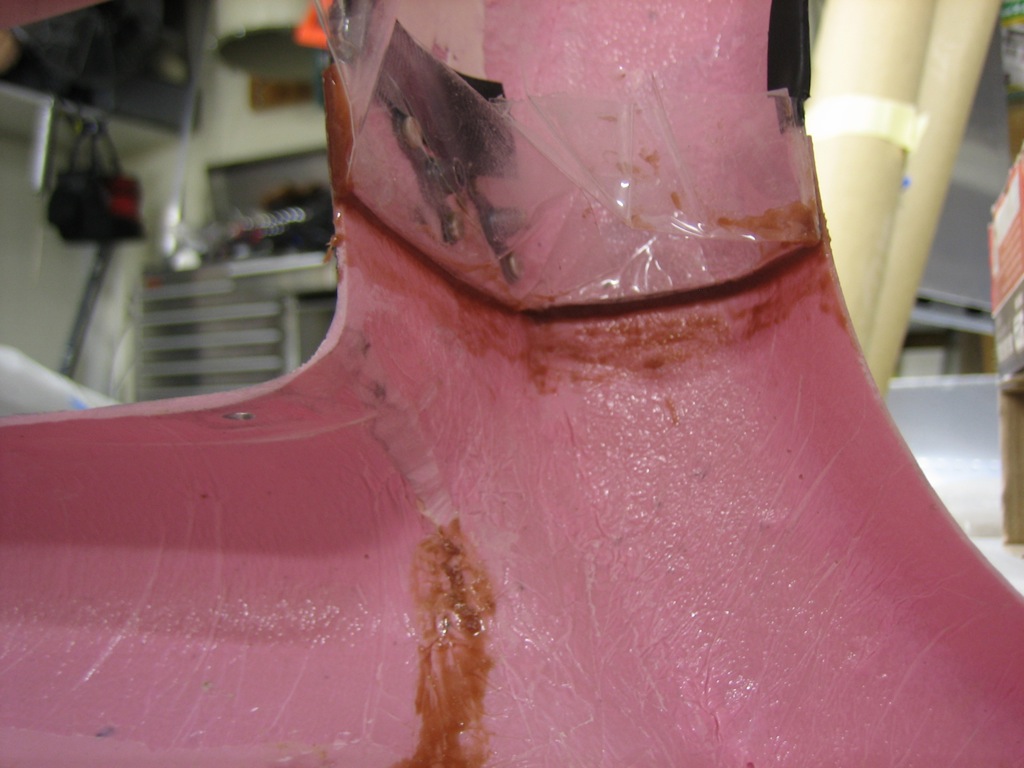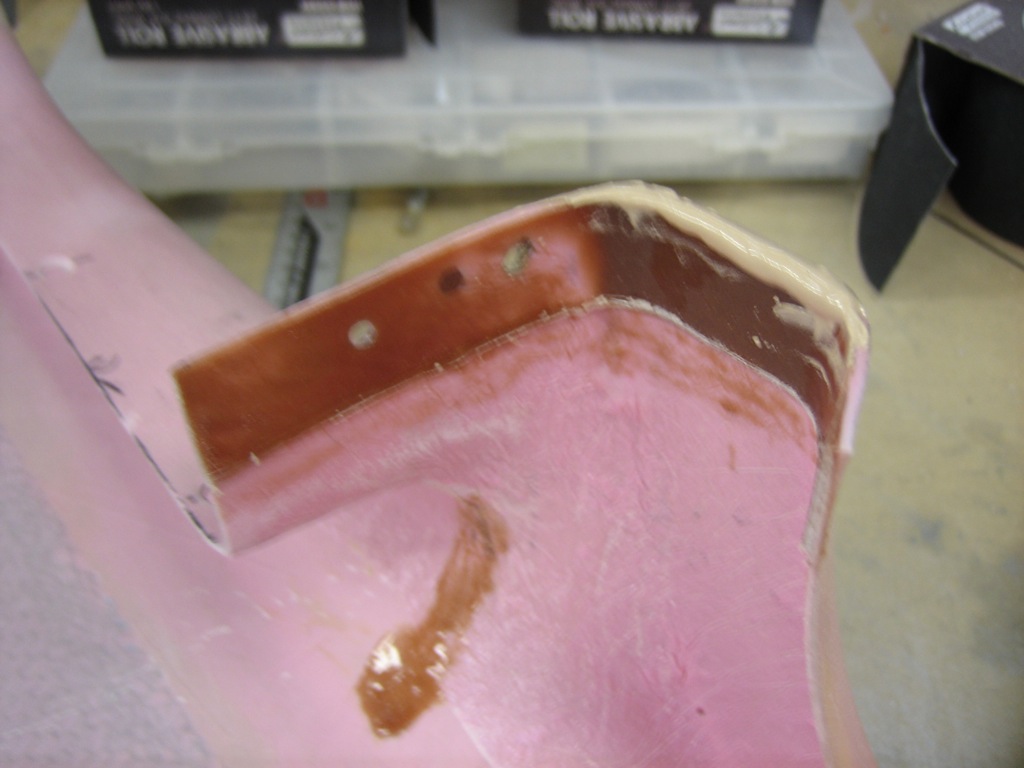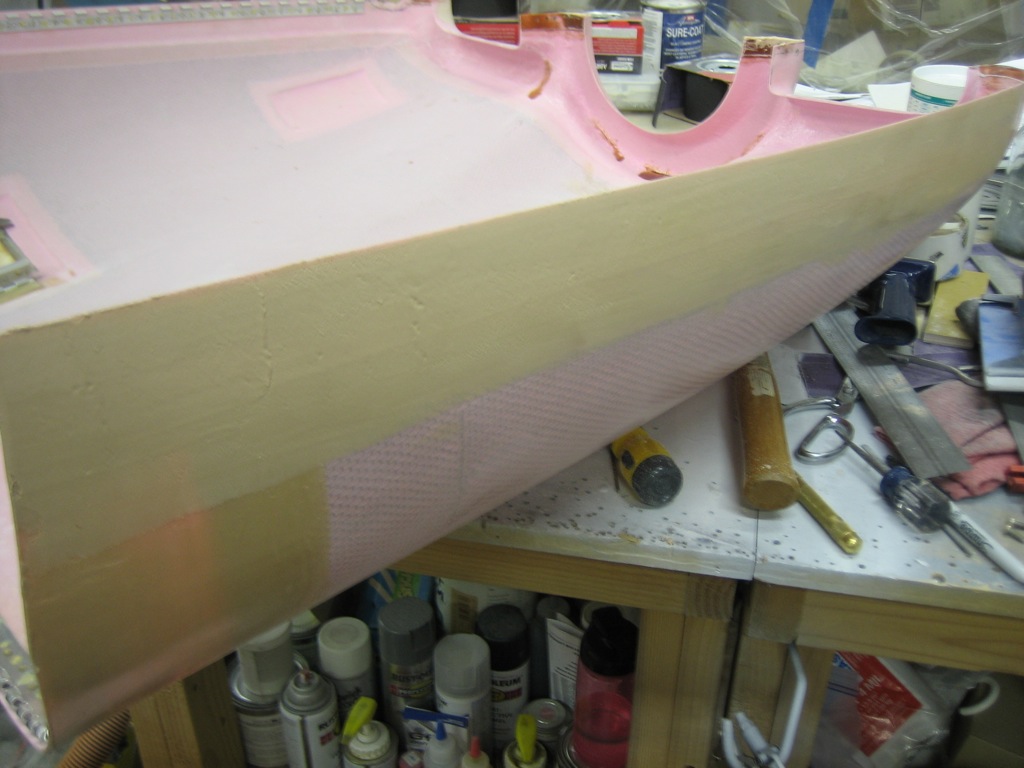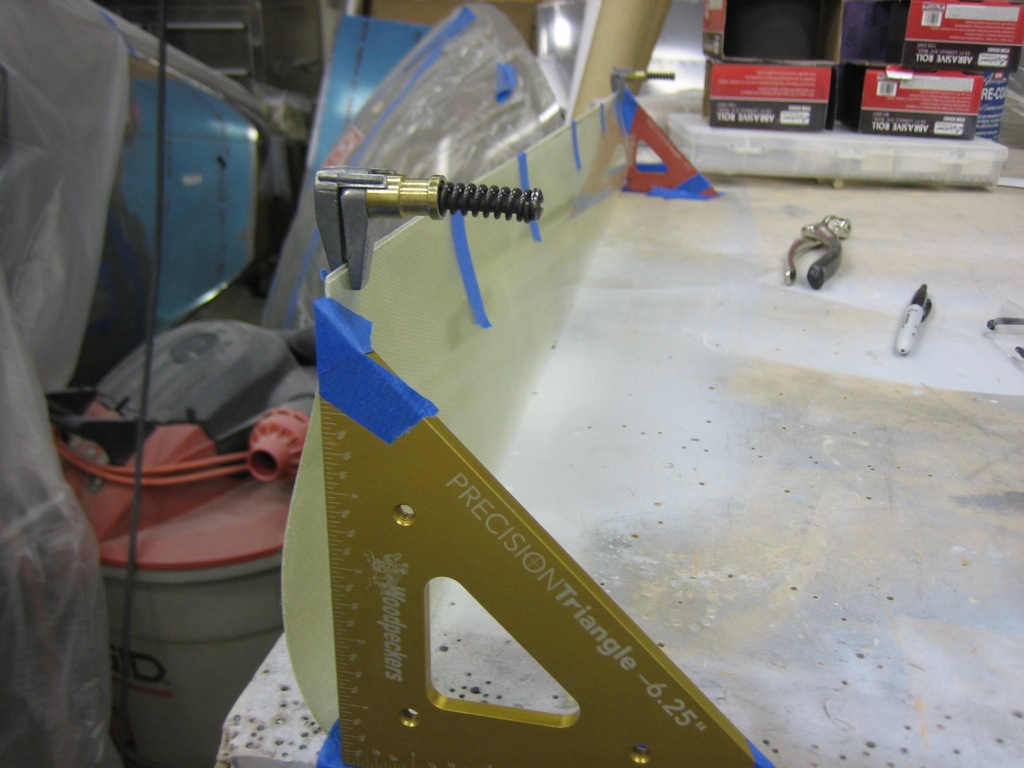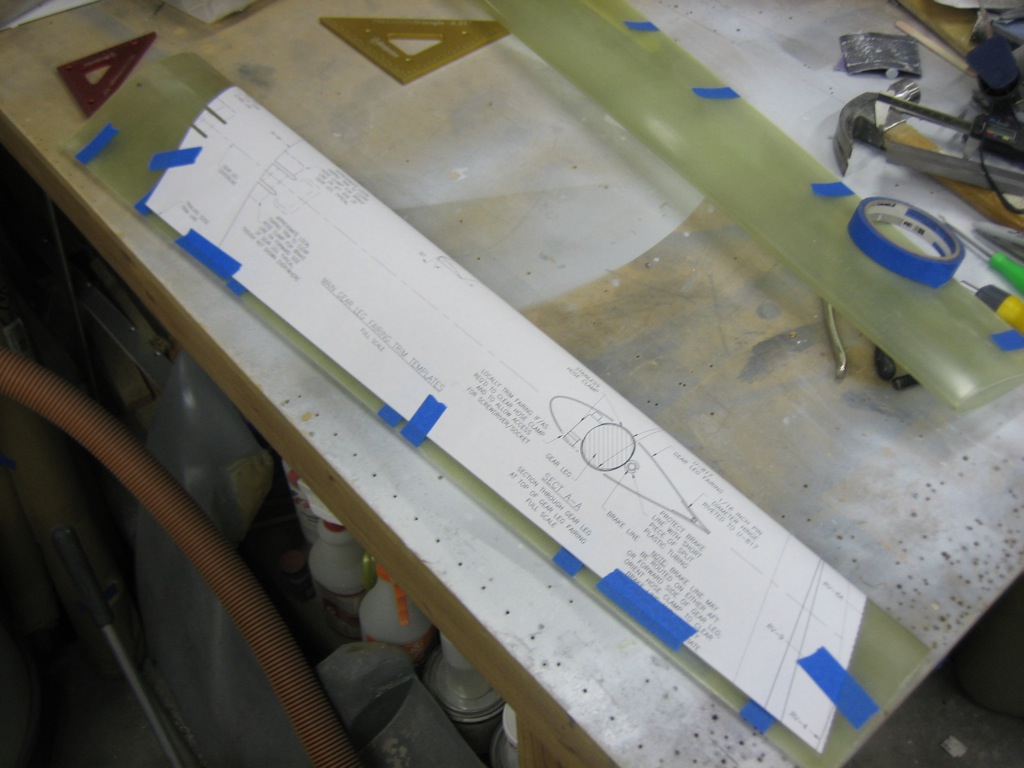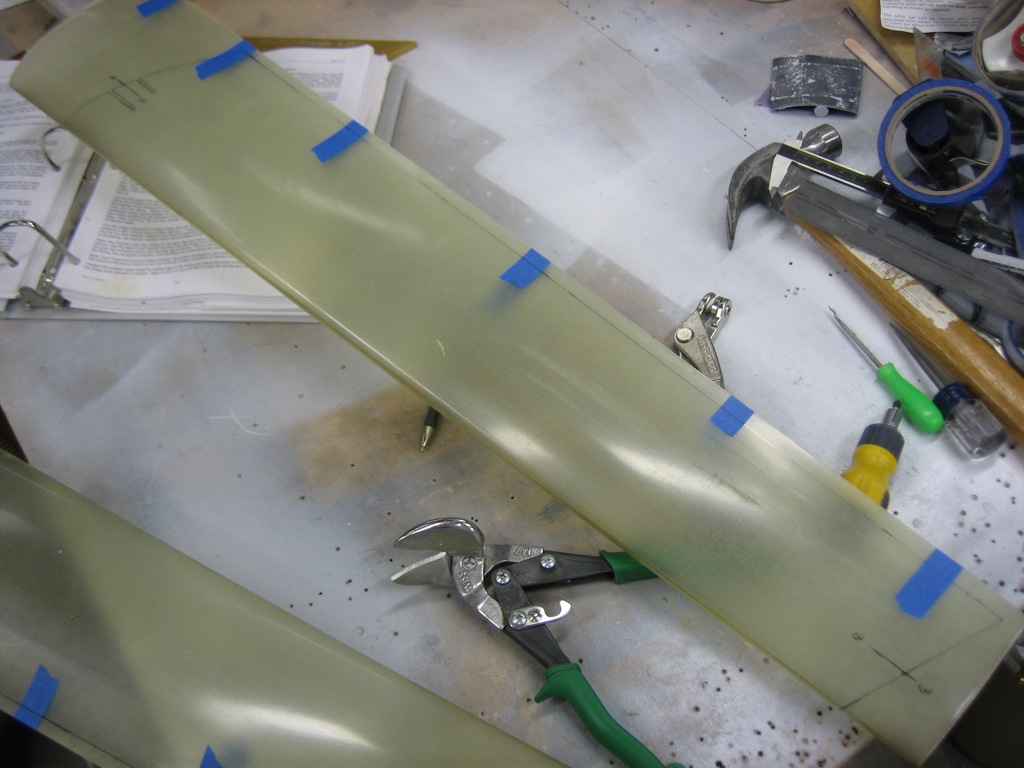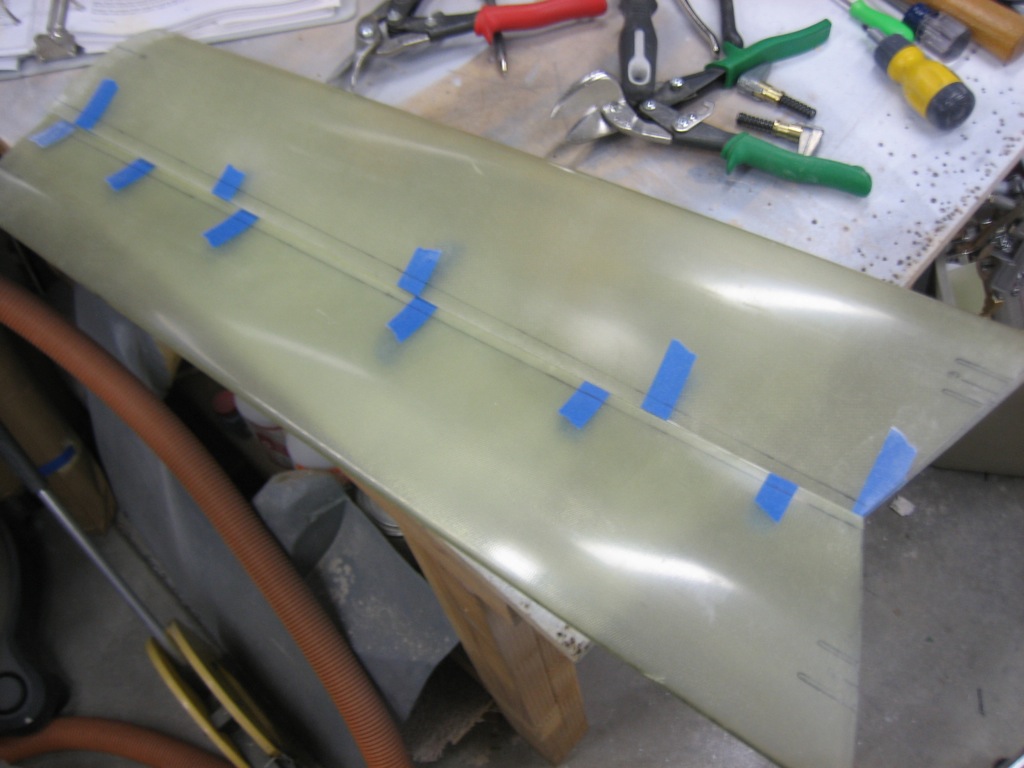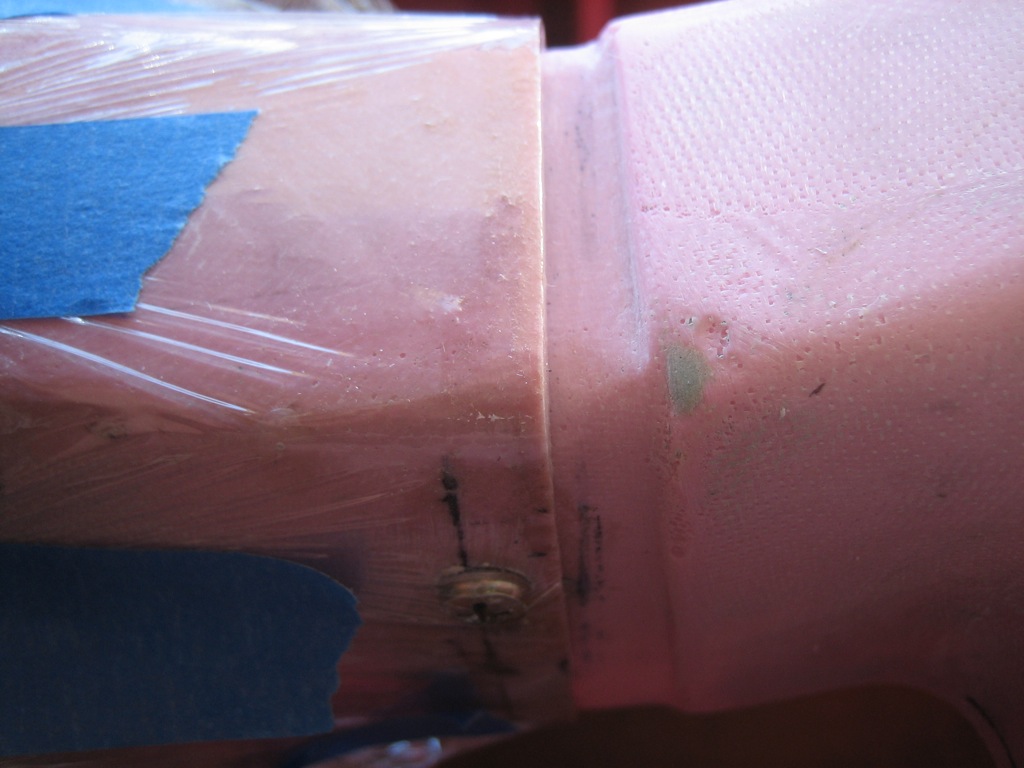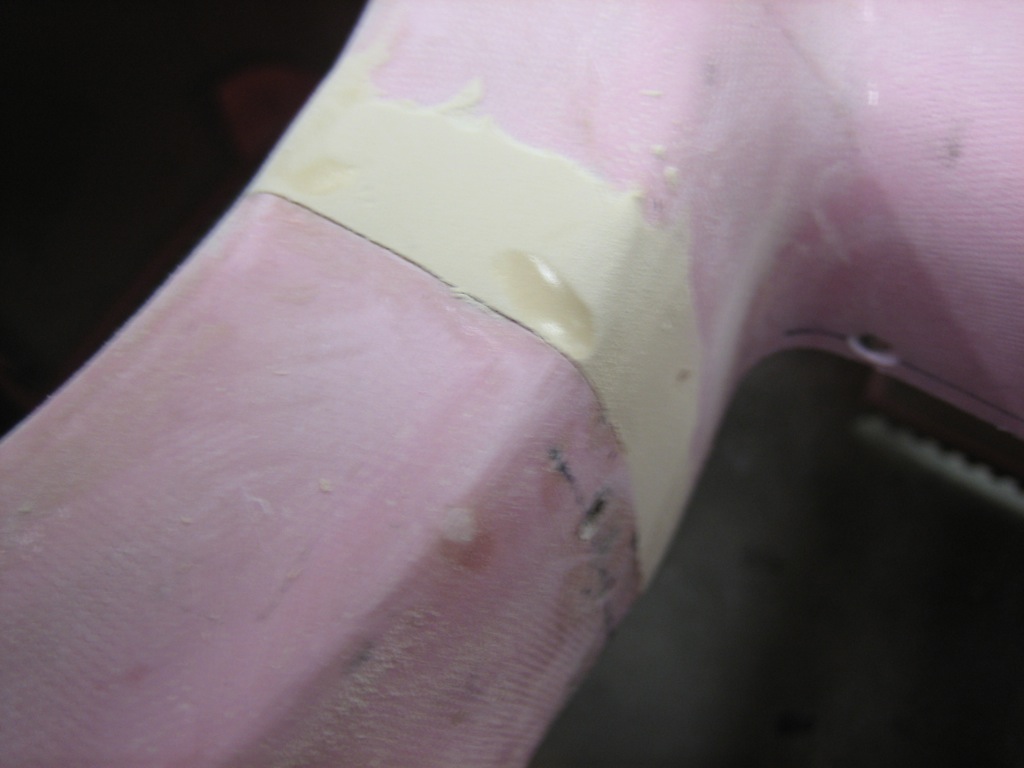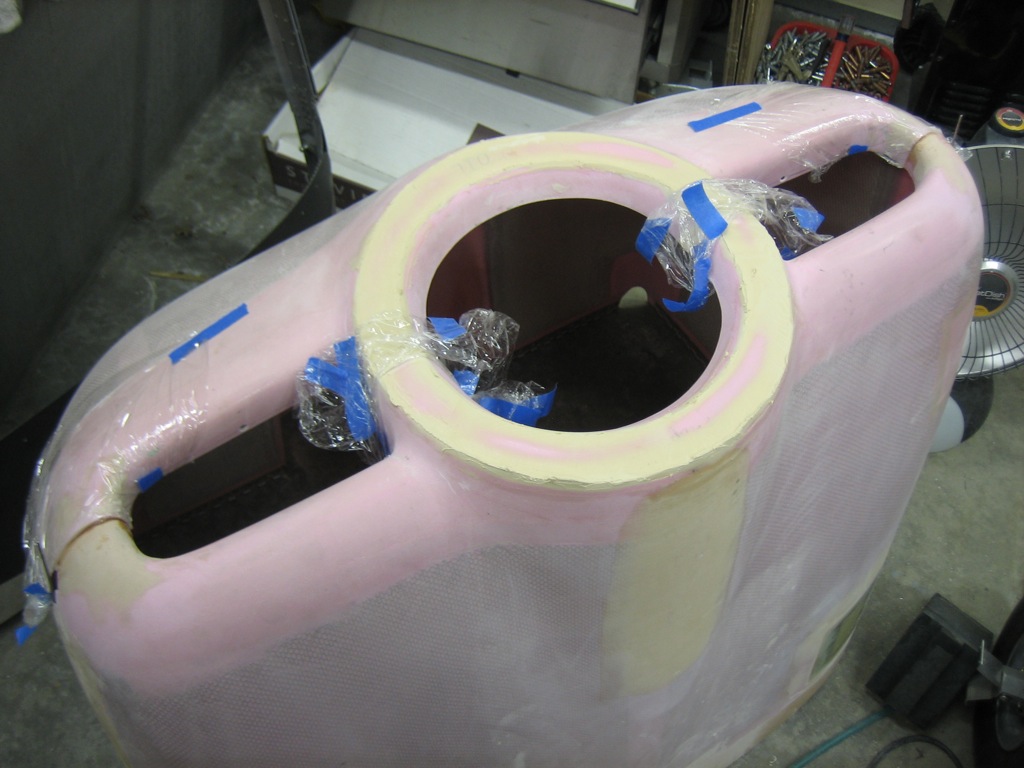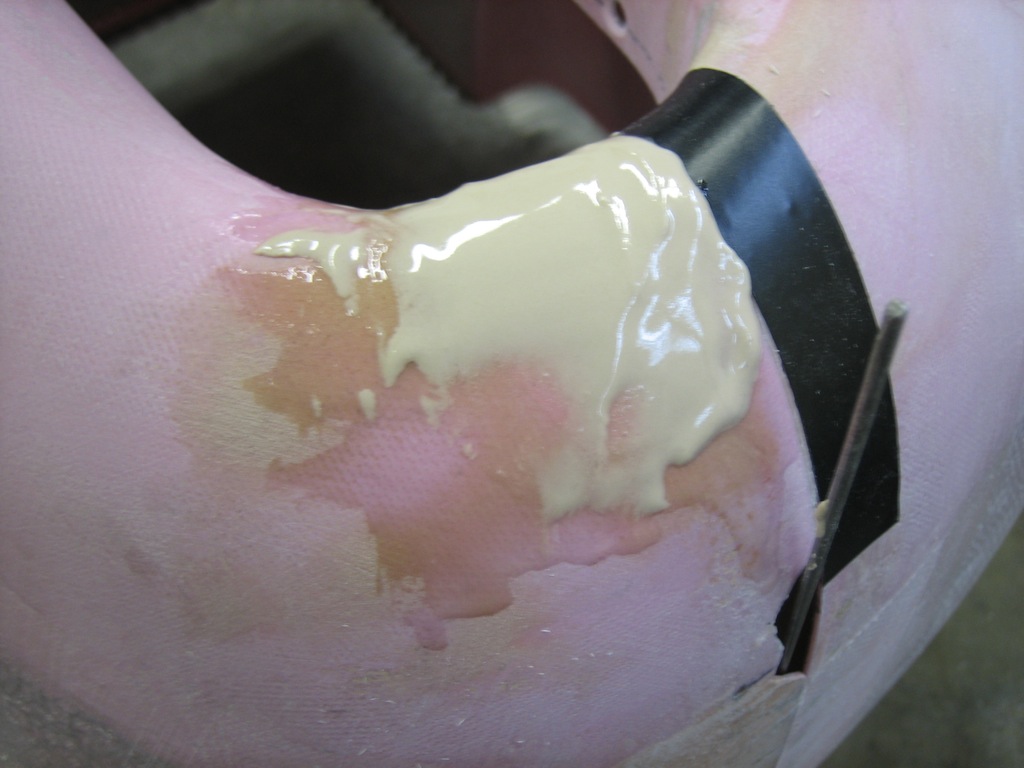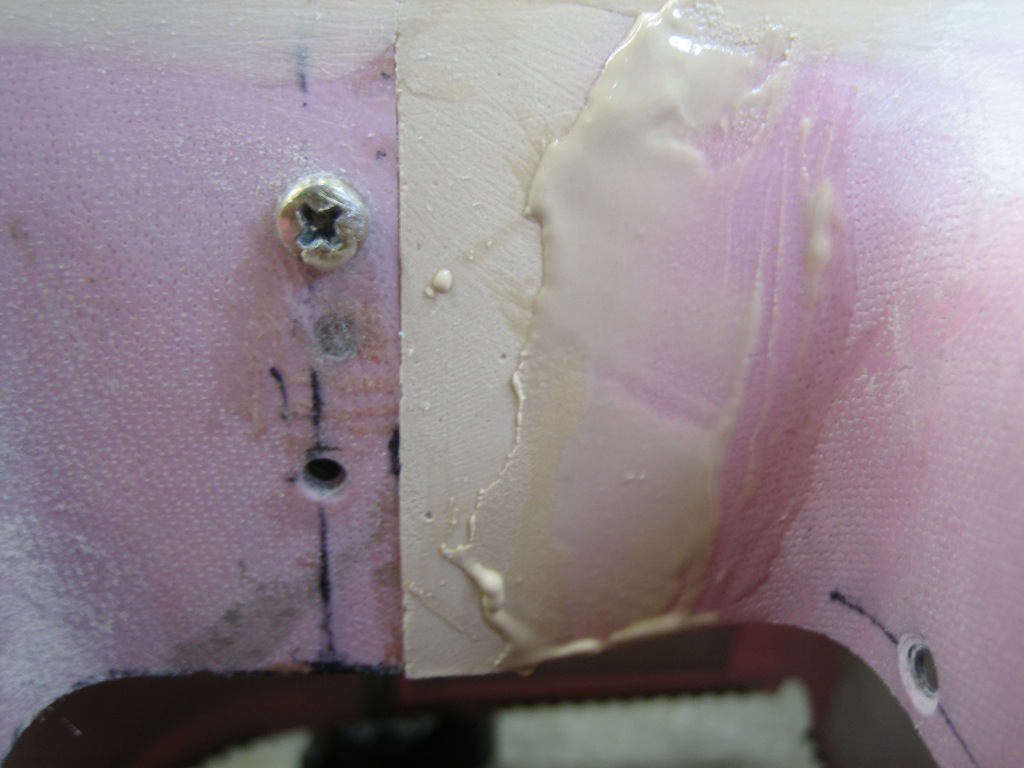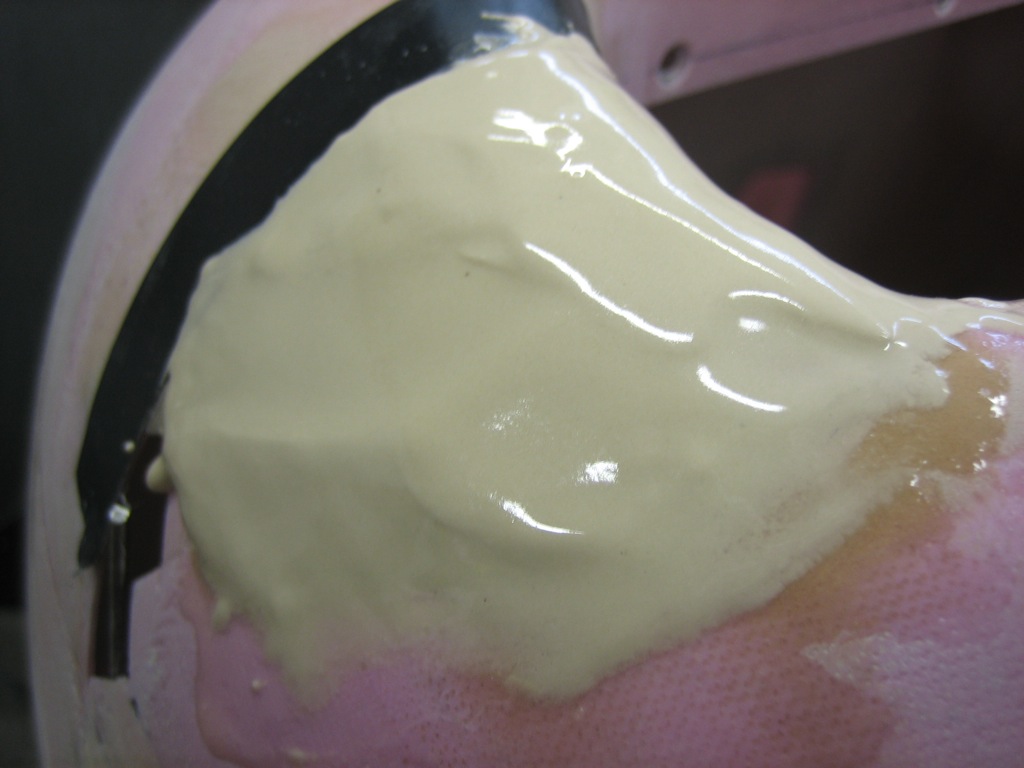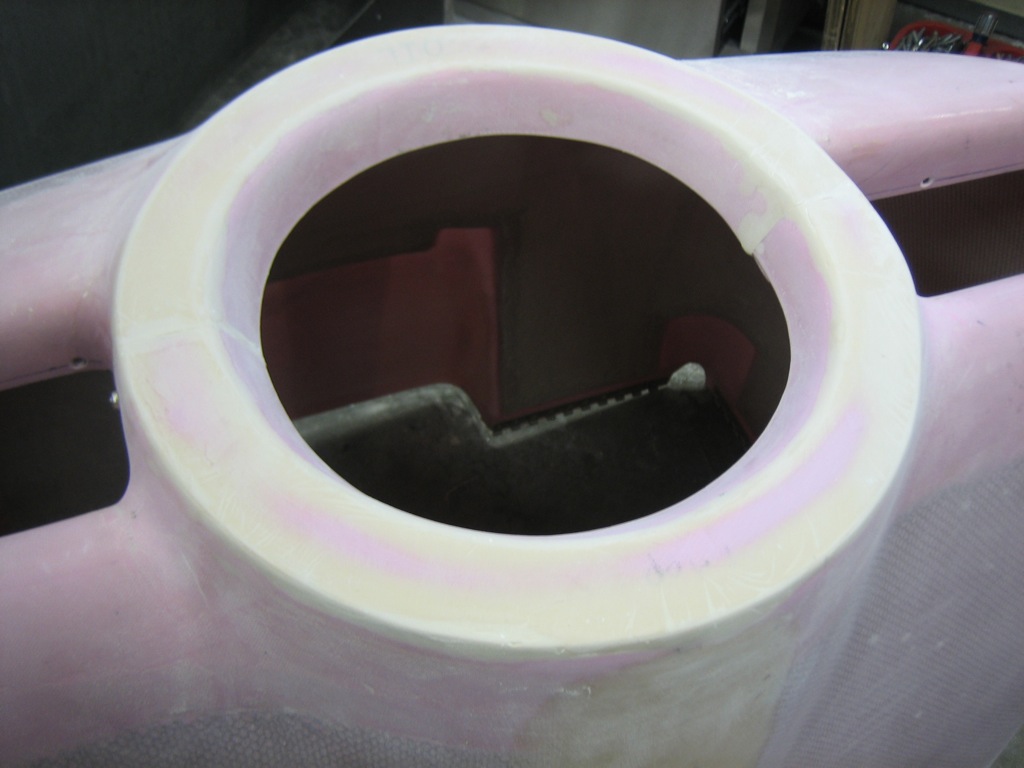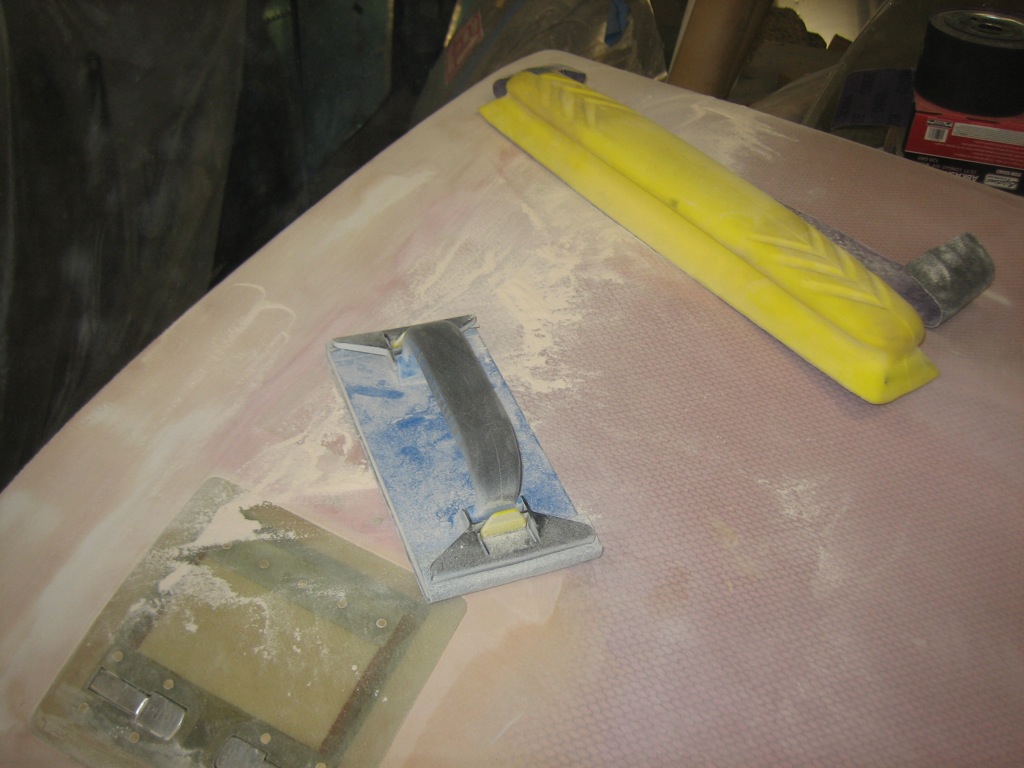I trimmed the right wheel pant bracket to match the left and fabricated three more spacers.
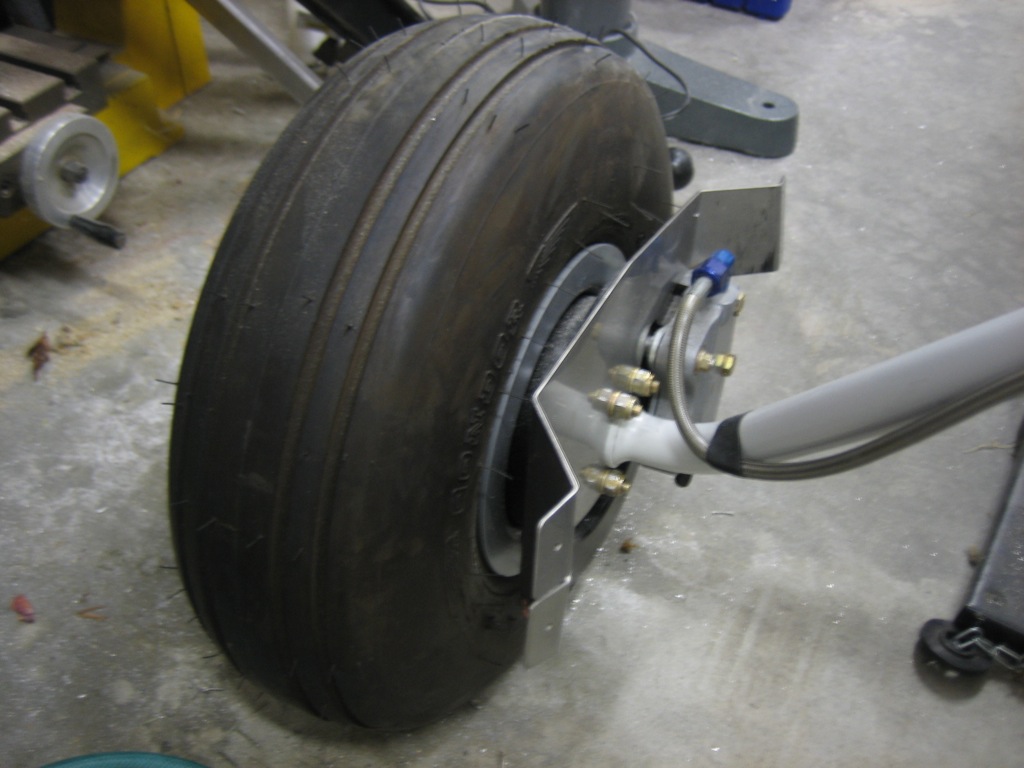
I then fit the outboard wheel pant brackets, but the attach point on the axle nut was rocking slightly which would have let the wheel pant move up and down a bit. I used a few layers of aluminum tape to make the bracket fit much more tightly on the axle nut.
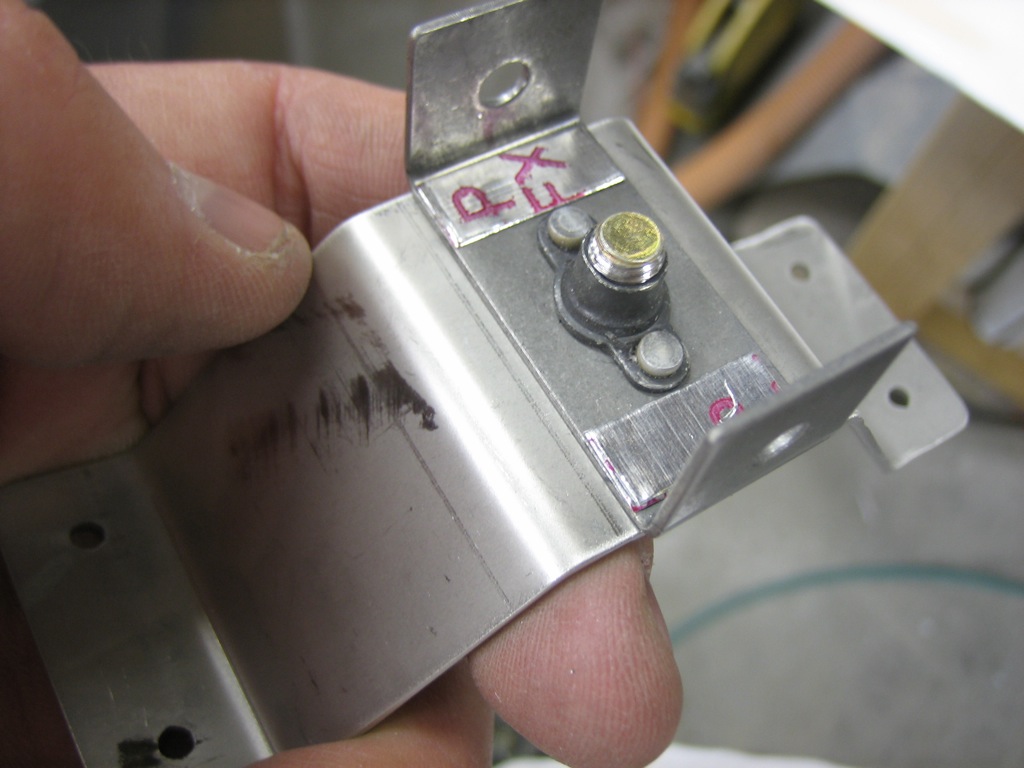
Here’s what it looks like installed.
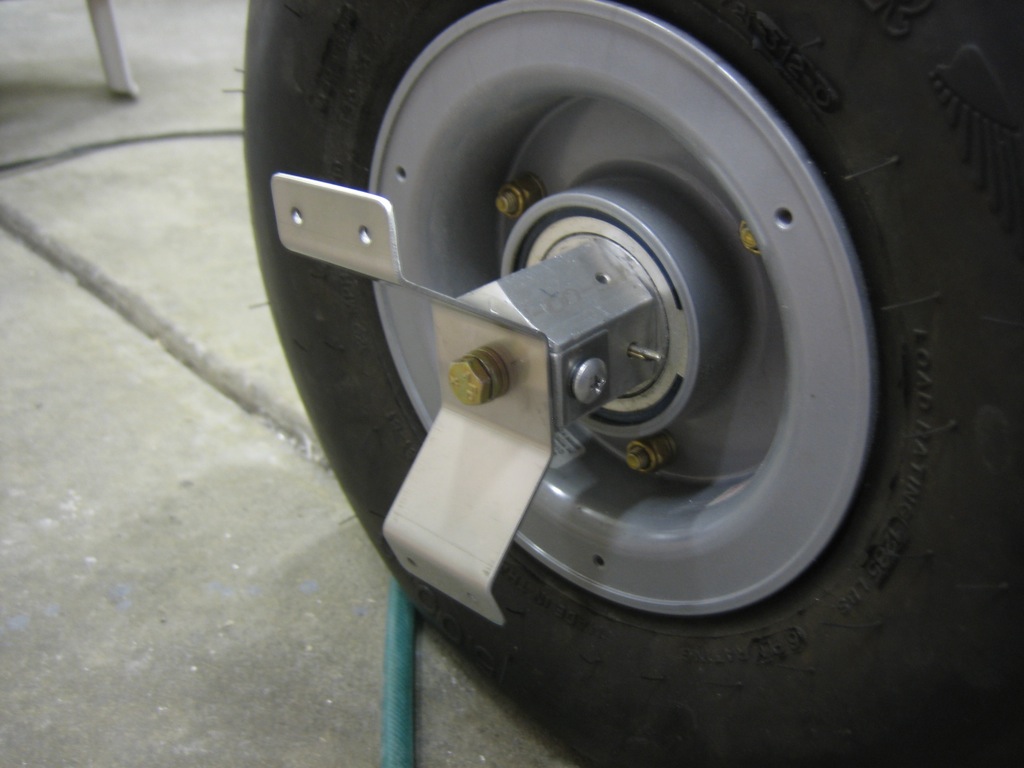
I’ve never been very happy with how uniform the spinner to cowl gap was. The way the cowl was formed, the center of the ring where the upper and lower half join was slightly recessed and had a larger gap than the upper and lower portion of the ring. To fix this, I mixed up some lightweight filler and spread it around the ring. I then covered it with saran wrap.
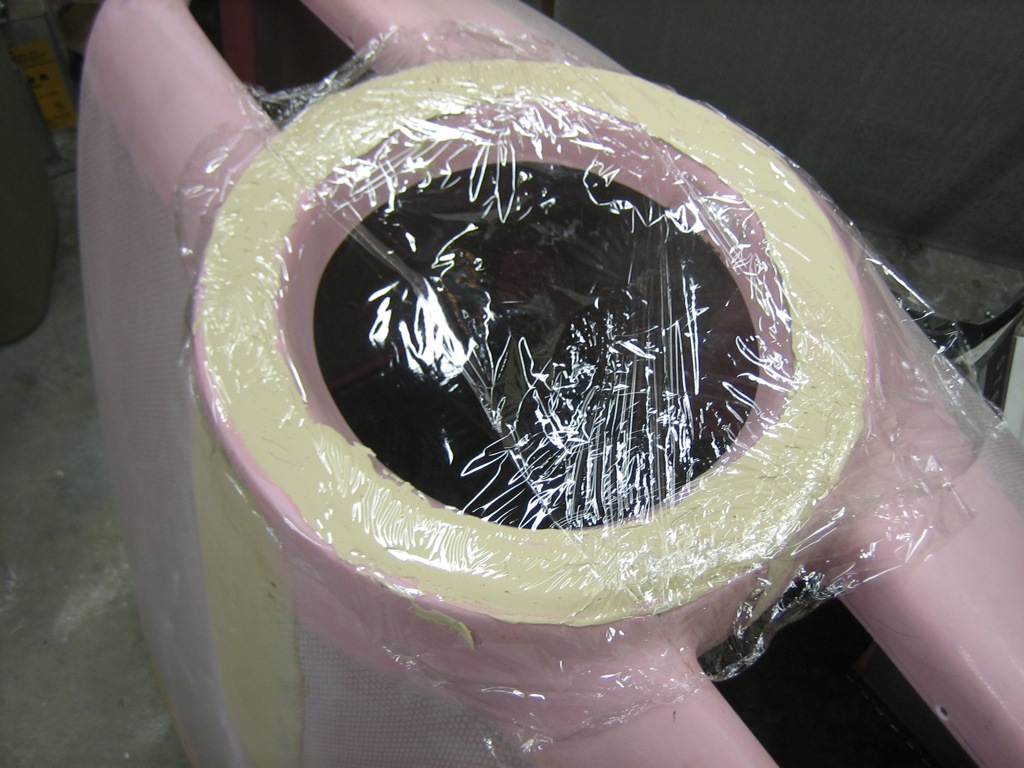
I put a flat board over that and pressed down firmly until enough of the filler squeezed out that I could see the pink part of the cowl around most of the ring.
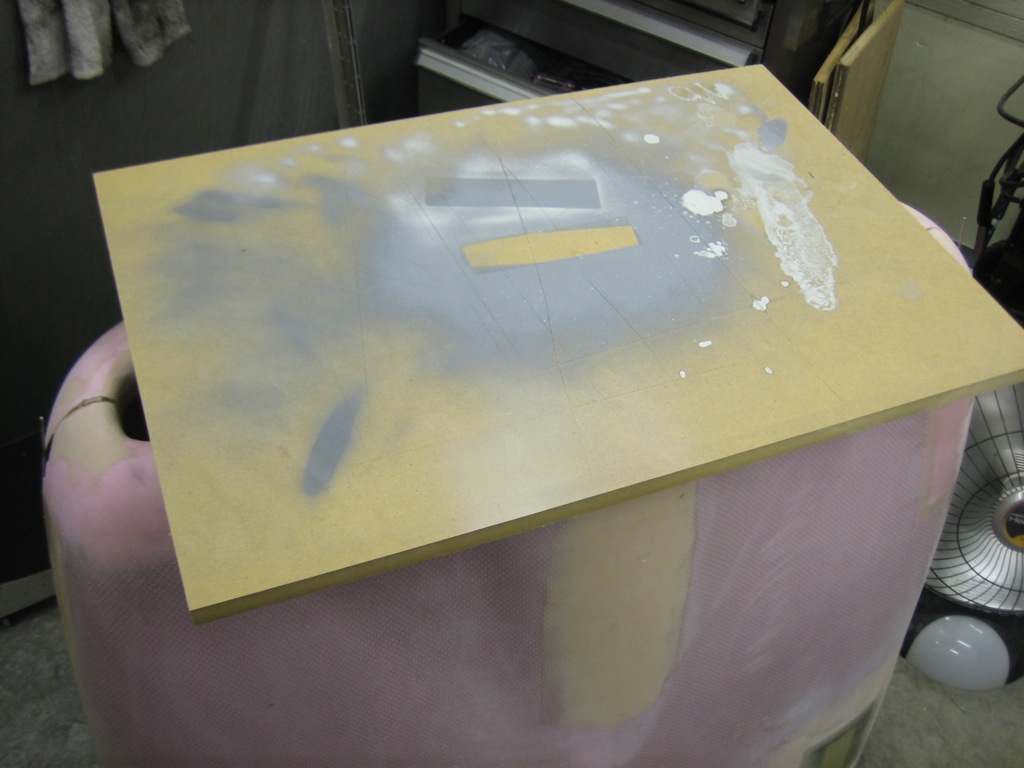
In addition to the bug which landed in my paint job, there were a bunch of scratches and pinholes visible in the finish. Since this will be very visible with the cowl off, I decided to try out a new technique for surface finishing. I sanded the surface with 80 grit and then spread raw epoxy over the surface. After it kicked, I squeegeed as much off as I could and then spread on another coat. After that kicked, I squeegeed it off as well. That should fill all of the pinholes and scratches. I’ll sand this with some finer grit sandpaper before reshooting the primer and finish coat.
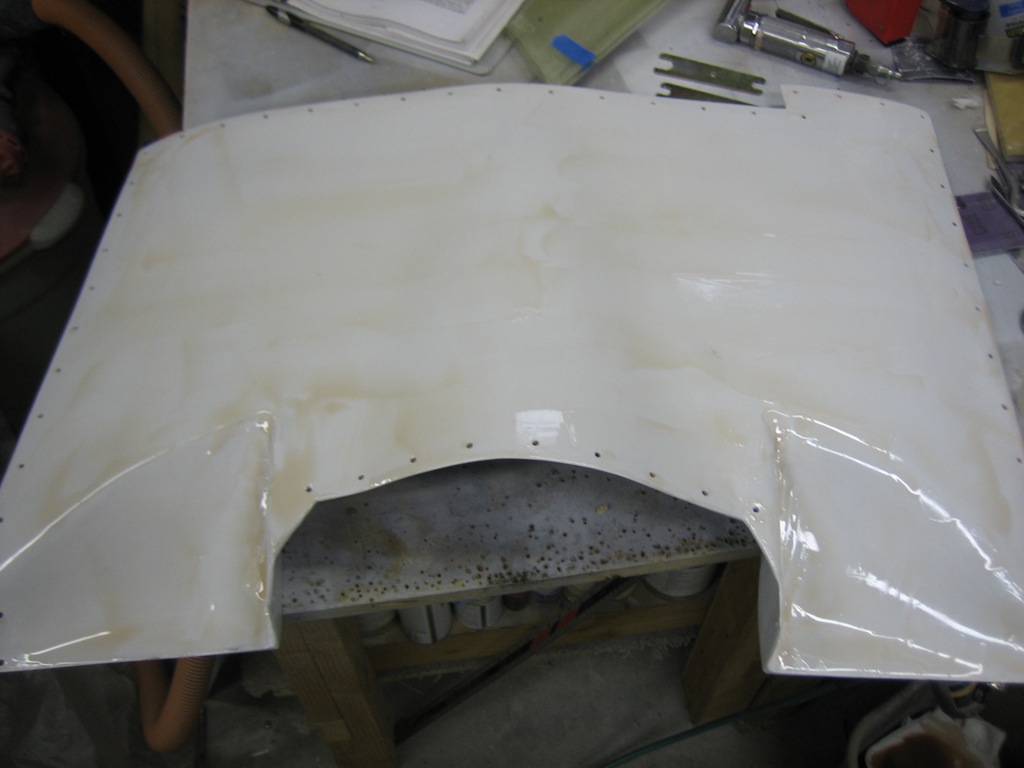
Between coats of raw epoxy on the plenum, I got started fitting the wheel pants.
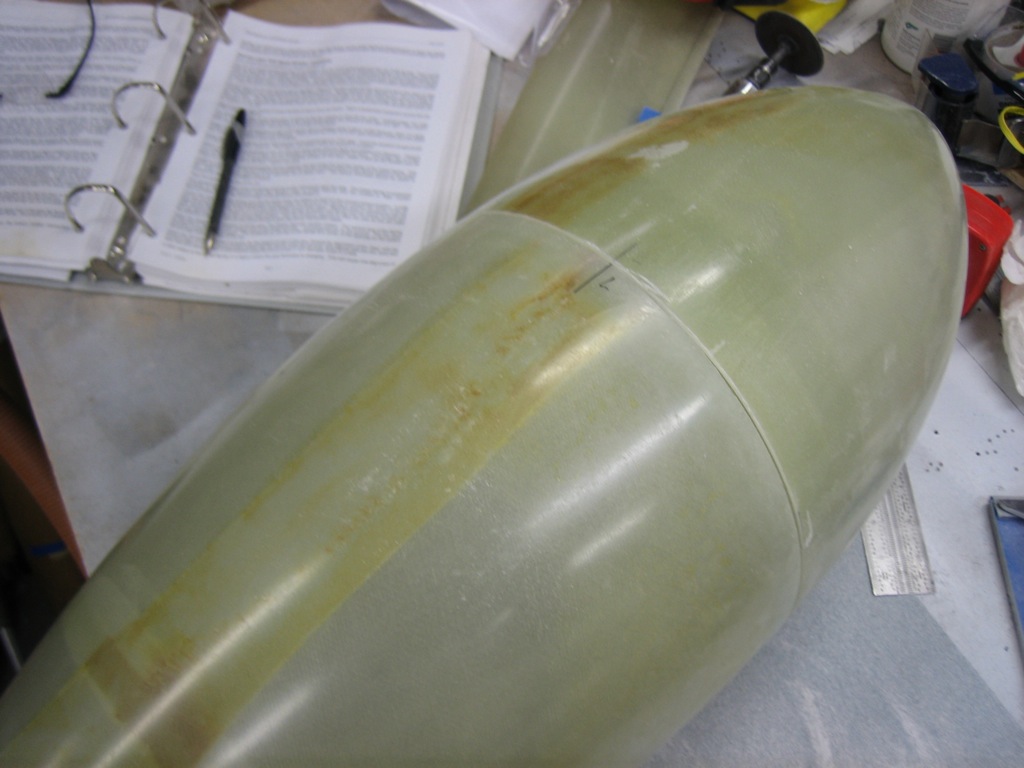
After figuring out where the two halves fit the best, I added some witness marks to make sure I put it back together the same way each time.
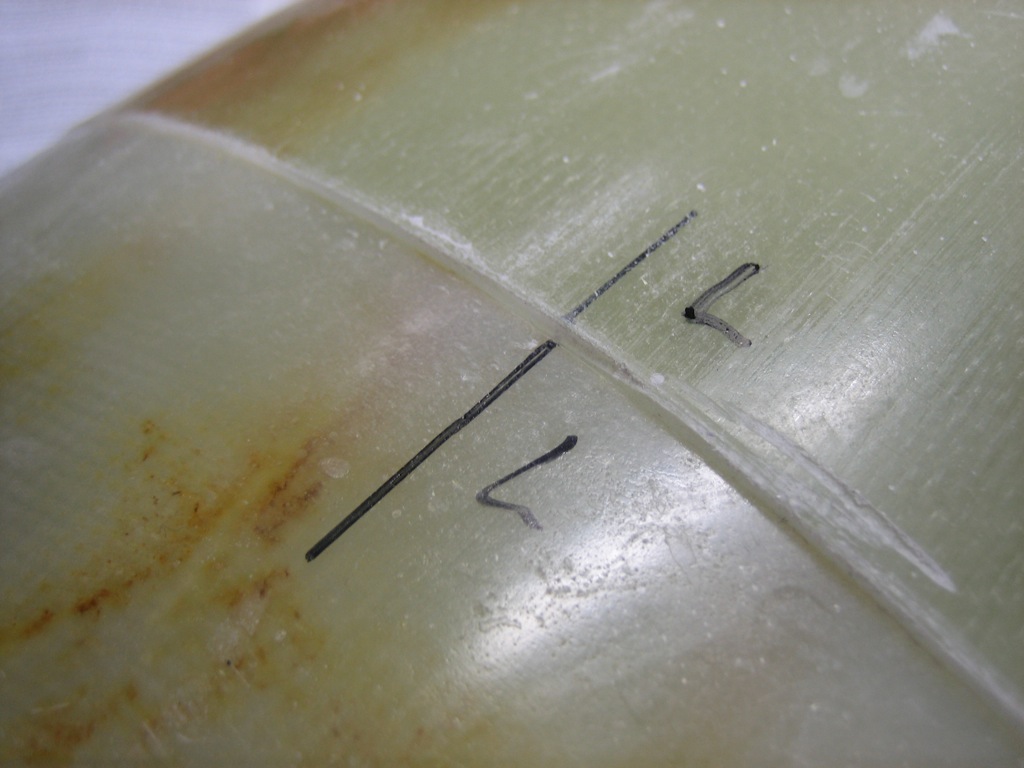
I trimmed the forward end to the scribe line and then sanded the edge until it sat flat on the table. You have to spread the wheel pant slightly when checking because it naturally springs inward a bit. It you sanded it flat in it’s rest state, the line wouldn’t be straight when installed on the aft half of the pant.
